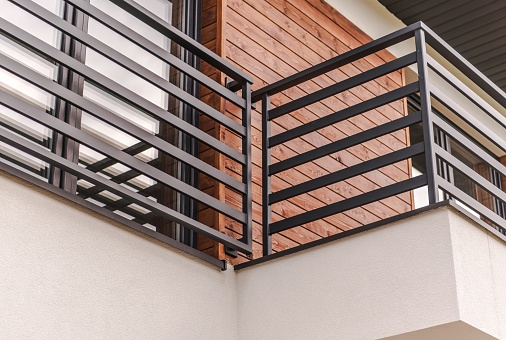Cable Metal Railing Systems are a great way to add elegance to any home or project. This type of railing system can be built in various materials, including 304 Stainless Steel or aluminum with powder coat. While these materials cost more, they offer durability and extreme strength. In addition, they look and feel incredibly high-end and luxurious, making them an excellent choice for any home or project.
Aluminum railings are maintenance-free
While aluminum is a low-maintenance, abrasive material can damage the finish of aluminum railing. Sometimes, you may need to power wash your aluminum railings twice a year. However, the period between washings will be significantly reduced with proper care.
Keeping your aluminum railings protected from the elements will help prolong the life of your investment. Most manufacturers offer touch-up kits for your aluminum railings. When applied correctly, these touch-up kits are nearly invisible.
Aluminum railings are also corrosion-resistant. Since aluminum is a non-iron metal, it does not rust or rot. It is a significant benefit, as steel requires painting every few years. In addition, aluminum railings can be easily cut using a regular miter saw.
Another significant advantage of aluminum railings is that they are affordable and lightweight. Furthermore, they are maintenance-free. Because aluminum does not rot or corrode like wood or iron, they do not require any maintenance. They can withstand even the harshest weather conditions. They are a good choice for commercial and residential applications.
Stainless steel cable railings resist corrosion
Stainless steel cable railing is an excellent option for exterior decks and staircases. This type of railing has many benefits, including corrosion resistance. Typically, this type of railing is used in stairwells, porches, and decks, but architects are constantly developing new uses for these types of railings. When used correctly, cable railings can showcase the personality of the home or business owner while also improving the look of a space.
Cable railings can give any home a classic or chic look, depending on the mounting system and framing. Some people use metallic finishes, while others prefer a more traditional look. Regardless of style, stainless steel cable railings are a smart choice for any home or business, as they resist corrosion and are virtually maintenance-free. In addition to being very durable, cable railings from vivarailings.com/products/cable-railing-tee-system are also very modern and chic.
Another benefit of stainless steel cable railings is their low cost. They can be used in outdoor settings, where their structure needs to resist harsh weather conditions. With a good cable railing system, you will enjoy the peace of mind of knowing that your railings will remain safe even during hurricanes and other storms. They’re also more affordable than metal railings. However, cable railings need regular maintenance and may be replaced if cables become loose.
Cable railings should regularly be cleaned with warm water, a soft cloth, and mild dish soap. The frequency of cleaning depends on the weather and the location of the railings. Occasionally, you should pressure wash cable railings to get rid of debris and adjust tension.
Wooden railings are cheaper
Wooden railings are much cheaper than a cable metal railing system. This material is sturdier and requires less maintenance. They are also less prone to damage from moisture and pests. They are also lightweight and corrosion-resistant. They also meet building code requirements.
Wooden railings are a more traditional choice than cable metal railing. A wood railing system will most likely be made of wood, although it may include glass, iron rods, or cable. In addition, you can install this type of railing yourself if you have the technical skills to do it.
Cable railing is often attached using swaging. This method involves compressing the fitting to the cable with different tools. Some companies use handheld cable crimpers, which are used to squeeze the fitting onto the cable. Others, such as Viewrail, use stainless steel fittings that are “smashed” onto the cable. While this method is more difficult, stainless steel fittings can withstand great force. The cable is then secured into place.
However, wood railings require periodic maintenance. You should expect to spend up to $500 every 18 months for regular cleaning and refinishing. In addition to this, you should also consider the installation cost. If installing a cable system for a 350-square-foot deck, expect to spend between $3,000 and $880.
Cable systems cost twice as much as wooden railings. But, unlike wood, cable posts are more durable. They are also safer than other materials. And you can use them in tandem for an attractive and safe combination.
Another significant advantage of cable railings is that they require minimal maintenance. Cable railings are usually made of stainless steel or galvanized carbon steel, which resists rust. On the other hand, outdoor wood railings require periodic staining and sanding.
In addition, cable railings are easy to install and require minimal maintenance, unlike wood railings. They also require less maintenance, unlike wood, which is susceptible to rot.

